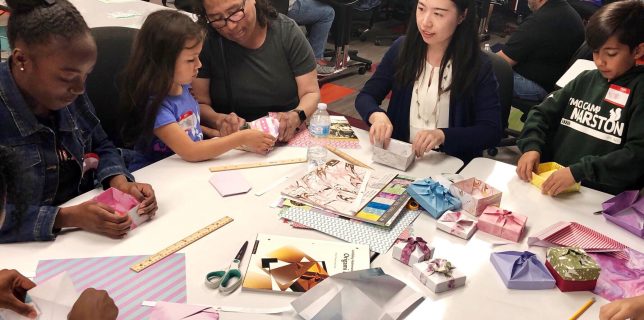 The University of San Diego’s Project VisMO was recently awarded a grant of $1,009,801 from the National Science Foundation, EHR Core Research (ECR). The project, “Fostering Elementary School Students’ Visuospatial Skills and Mathematical Competencies through an Origami-based Program,” or Project VisMO, starts August 15, 2019 and will conclude July 31, 2022.
The University of San Diego’s Project VisMO was recently awarded a grant of $1,009,801 from the National Science Foundation, EHR Core Research (ECR). The project, “Fostering Elementary School Students’ Visuospatial Skills and Mathematical Competencies through an Origami-based Program,” or Project VisMO, starts August 15, 2019 and will conclude July 31, 2022.
VisMo is under the direction of Dr. Yaoran Li, Managing Researcher at the Jacobs Institute, with co-Primary Investigators Dr. Perla Myers and Dr. Vitaliy Popov, in collaboration with Dr. David Geary, Curators’ Professor of the University of Missouri-Columbia.
Project VisMO is a three-year project that investigates the causal link between children’s visuospatial skills development and their longitudinal gains in mathematical competencies.
Visuospatial and mathematical competencies are important in most STEM (Science, Technology, Engineering, Mathematics) fields and both are underdeveloped in under-served learners in the United States. This project refines an engaging intervention through an iterative design-based research process to help identify the learning and teaching components that can optimally foster children’s visuospatial skills.
Project VisMO has a special focus on English Language Learners (ELLs). The project aims to help ELL students make meaning of spatial concepts through hands-on activities with the use of explicit spatial vocabulary, visual displays (e.g., sketches, diagrams), and gestures. One of the attractive features of the VisMO curriculum is that it is less dependent on English proficiency than typical mathematics interventions.
Dr. Li, Managing Researcher at the Jacobs Institute for Innovation in Education and principal investigator for the project, shared, “I am very excited to start the project and work with an amazing interdisciplinary team of researchers, educators and origami artists. California has the highest proportion (21 percent) of ELLs of any state in the U.S, and they are performing much lower than their non-ELL peers. However, the research on how to foster their mathematical and visuospatial competencies is limited and many misconceptions exist. I believe that the VisMO project has the potential to uniquely contribute to our understanding of ELL students’ spatial and mathematical learning and effective teaching strategies.”


